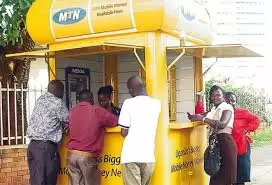E-levy is regressive, lower income earners pay the largest share – Research reveals
“It protects the poor because of the threshold, however, the worth of GH¢100 when the e-levy was introduced in 2022 is less compared to Gh¢ 100 now. The Government can consider raising the threshold from Gh¢ 100 to match up with the inflation rate,”
A research conducted on the impact of the E-levy in Ghana has revealed that the e-levy is a regressive tax, where he lower income earners pay the largest share as a proportion of their income.
The research work on the topic: “Mobile Money Taxation and Informal Workers: Evidence from Ghana’s E-levy,” showed that home-based informal workers are disproportionately burdened by the tax, relative to street vendors and market traders.
It also revealed that most informal workers disapproved of the e-levy, raising concerns about its impact on equity and disappointment with the government’s performance.
The Research was presented and discussed during a two-day conference organised by the International Centre for Tax and Development in partnership with the Ghana Revenue Authority on the subject: “Taxing Mobile Money – Lessons and Ways Forward.”
In a summary paper, it was indicated that the threshold of Gh¢100 had been effective in sheltering some lower-income users, however, it did not fully address their disproportionate burden.
It also found that women were likely to be liable for e-levy payments but were substantially more likely to disapprove of its introduction.
“Women in Accra’s informal economy are substantially less likely to support the e-levy, while older and more educated individuals were more likely to support the tax,” the report said.
The e-levy was introduced in 2022 by the Government and the idea was to tap into the enormous potential’ for tax revenue in the informal economy.
The research examined the likely impact of the e-levy on informal workers from an equity standpoint concerning earnings, gender, and occupational sector.
Data was collected in April and May 2022 in the Accra Metropolitan Assembly (AMA) from a survey of 2, 700 self-employed informal workers.
Nana Akua Anyidoho, Director at the Centre for Social Policy Studies, University of Ghana, and other Researchers, said, the e-levy was a flat tax, adding that it was a tax that had the same rate regardless of one income.
“We found that people at the lowest income levels in that segment of the population ended up paying more of their income on e-levy taxes. In terms of proportion, you are taxing people at the lowest point seven times more than people at the highest point of the informal sector,” she said.
She told the Ghana News Agency that the notion that people in the informal economy do not pay tax was not true, rather, the question had been “who is paying the tax in the informal sector, how much they pay and if what they pay was the required amount.”
“We need to do research, collect data to know how we can target and make people pay the right amount of tax. We do not stand by and make a general assumption that people in the informal sector are not paying tax so let’s go after them with a blunt instrument like the e-levy,” she said
Dr Martin Hearson, Research Director of the International Centre for Tax and Development, said the e-levy could deliver revenue of GH¢ 1 billion every year, adding the public understanding of how it works, including the Gh¢100 threshold and 1 per cent rate must be explained.
“It protects the poor because of the threshold, however, the worth of GH¢100 when the e-levy was introduced in 2022 is less compared to Gh¢ 100 now. The Government can consider raising the threshold from Gh¢ 100 to match up with the inflation rate,” he said.
Source: GNA


